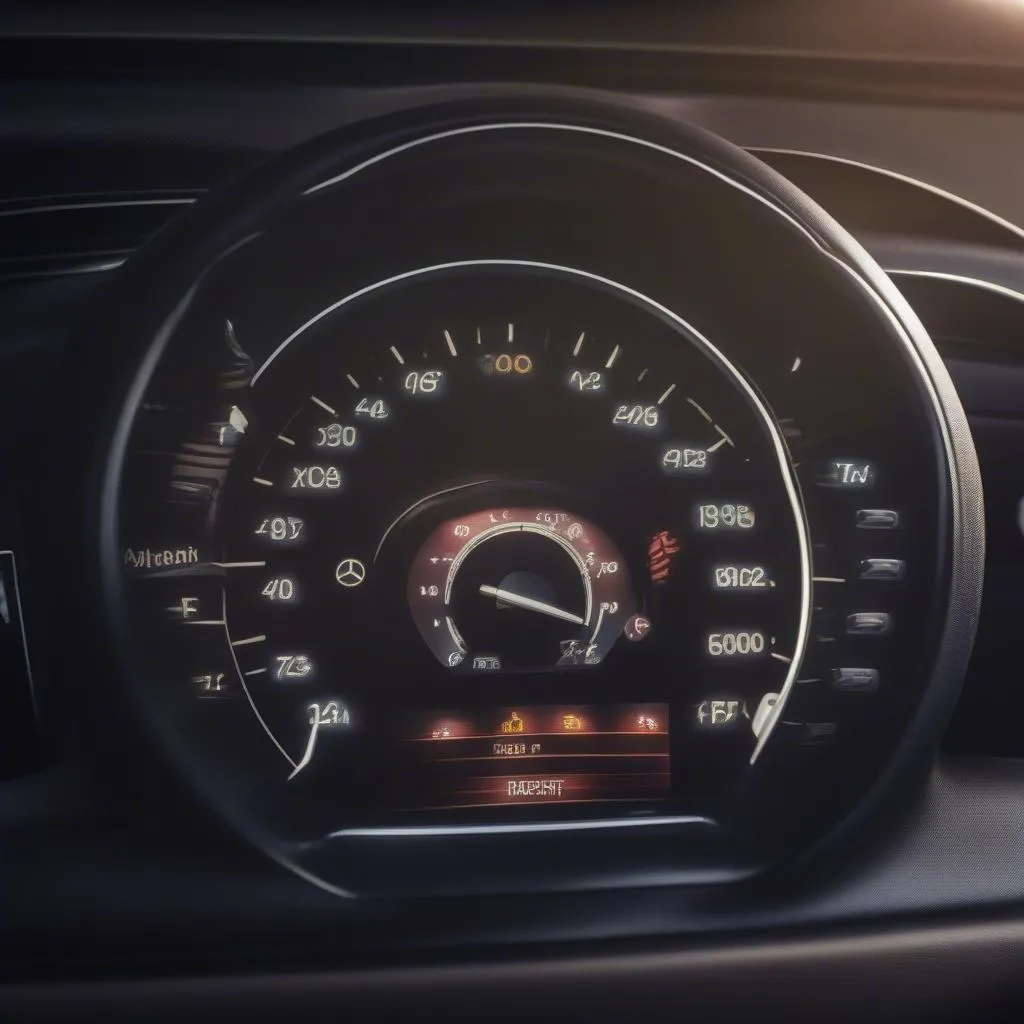Is your Mercedes E320 acting up? Experiencing rough idling, poor acceleration, or decreased fuel efficiency? The culprit might be a faulty Manifold Absolute Pressure (MAP) sensor. Fortunately, locating and even fixing this yourself is easier than you might think. This comprehensive guide will walk you through the entire process, from identifying the symptoms to getting your E320 running smoothly again.
Understanding the MAP Sensor and Its Importance
Before we dive into the fix, let’s understand why the MAP sensor is so crucial for your E320’s performance. In simple terms, this sensor acts like your car’s “lungs.” It measures the air pressure inside the intake manifold and sends this vital information to the Engine Control Unit (ECU). The ECU uses this data to determine the optimal fuel-air mixture for combustion, ensuring efficient engine operation.
mercedes-e320-engine-diagram|Mercedes E320 Engine Diagram|A diagram highlighting the location of the MAP sensor within a Mercedes E320 engine bay.
Common Symptoms of a Faulty MAP Sensor
A malfunctioning MAP sensor can disrupt your E320’s performance in several ways. Here are some telltale signs to watch out for:
- Rough Idling: Your engine might feel shaky or vibrate excessively when idling.
- Poor Acceleration: Hesitation or sluggishness when you press the accelerator pedal.
- Decreased Fuel Economy: A noticeable drop in your E320’s miles per gallon.
- Check Engine Light: The dreaded “check engine” light might illuminate on your dashboard.
Locating the MAP Sensor on Your Mercedes E320
Now, let’s pinpoint the location of the MAP sensor in your E320. Typically, you’ll find it mounted on the firewall, near the intake manifold. It’s a small sensor with a vacuum hose connected to it.
map-sensor-on-firewall|MAP Sensor on Firewall|Close-up image of a MAP sensor attached to the firewall of a car engine, with its vacuum hose connection visible.
Tools You’ll Need for the Fix
- Flathead screwdriver
- Replacement MAP sensor (compatible with your E320’s model year)
Fixing the MAP Sensor: A Step-by-Step Guide
- Locate the MAP Sensor: As mentioned earlier, you’ll find it on the firewall, connected to the intake manifold by a vacuum hose.
- Disconnect the Vacuum Hose: Carefully loosen the clamp securing the vacuum hose to the MAP sensor and gently pull the hose off.
- Remove the Sensor: The MAP sensor is usually held in place by two screws or bolts. Use a flathead screwdriver or an appropriate wrench to remove them.
- Install the New MAP Sensor: Align the new sensor with the mounting holes and secure it using the screws or bolts.
- Reconnect the Vacuum Hose: Firmly push the vacuum hose back onto the sensor’s nipple and ensure the clamp is securely fastened.
replacing-map-sensor|Replacing MAP Sensor|Two images, side-by-side. The left shows a hand removing a MAP sensor. The right shows a hand installing a new MAP sensor.
FAQs About Mercedes E320 MAP Sensor Issues
Q: Can I clean my existing MAP sensor instead of replacing it?
A: While cleaning might temporarily solve the issue, it’s often recommended to replace the sensor for a long-term solution.
Q: How do I know if the MAP sensor is the root cause of my car problems?
A: Using an OBD-II scanner to read your car’s error codes is the most accurate way to diagnose a faulty MAP sensor.
Q: Can a faulty MAP sensor damage my engine?
A: While a bad MAP sensor won’t directly cause catastrophic engine damage, it can lead to reduced fuel efficiency and potentially harm other engine components in the long run.
Need Professional Diagnostics? Cardiagtech Can Help!
Even with this guide, diagnosing car troubles can be tricky. If you’re unsure about any step or suspect other issues, seeking professional help is always a good idea. Consider using the CARDIAGTECH [mention specific CARDIAGTECH product for diagnosis]. This advanced tool provides accurate diagnostics, helping you pinpoint and understand any car problems quickly and efficiently.



